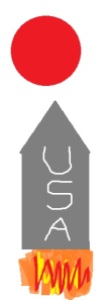When I saw NASA’s advertisement for “Planetary Protection Officer,” I knew that it was the job for me. I have always been concerned about interplanetary missions accidentally bringing alien germs back to Earth. Although I did not have the required degree in physical science or math, I hated being around sick people, especially people who are sniffling or coughing, and I knew that this trait would make me the most qualified candidate.
My first task upon being hired was to install hand sanitizer dispensers on all spacecraft, with a sign stating that all personnel were required to use it on their hands before entering the spacecraft. It seemed easy, until I realized that the alien life forms would probably not be able to read English.
So instead I drew several diagrams of aliens placing their hands underneath the dispenser, their hands filling with foam, and then the aliens rubbing their hands together. But then I realized that the aliens might not have hands. So I added a few more diagrams that were exactly the same, except in each one the hands were replaced with a different extremity: tentacles, claws, wings, hooves, fins. I thought I’d covered every possible combination, until some staffer asked, “What if the alien is a gelatinous blob?” I replied that gelatinous blobs would obviously be far too weird-looking to be allowed on Earth. I then arranged to have the staffer transferred to a less challenging department.
Next, I drew diagrams demonstrating how aliens should cover their mouths if they coughed or sneezed. This was a much larger project, since not only did I have to cover a wide range of potential types of hands, but also types of mouths. Then it dawned on me that some aliens might have more mouths than extremities capable of covering them all.
This problem really had me stumped, until I realized that the thing to do was draw several diagrams, one showing the cough coming from one mouth, then another showing a sneeze coming from another mouth, and so on, with each drawing showing the hand or fin or tentacle covering just the mouth that was coughing or sneezing. It came out very clear, and I marveled at my success in communicating with extraterrestrial life.
My third task was the most challenging. I have always considered it my mission, and a difficult one at that, to convince people who have runny noses to grab a tissue and blow their noses, rather than sit there sniffling all day. We all know what it sounds like when someone with a runny or stuffed up nose chooses to sniffle it back rather than expel it into a tissue. And then makes that same choice again, and again, and…again, all day long, day in and day out, when there are plenty of tissues right there for the taking, especially when a well-meaning co-worker is holding the tissues out and offering them for free.
With it being so difficult to get humans to use tissues, I knew it would be even harder to convince lifeforms from other planets to blow their noses rather than sniffle?
I struggled with the problem, until I realized the truth was staring me right in the face: sound doesn’t travel in space. The aliens could sniffle all they want, for no one would ever hear them. I patted myself on the back for solving a problem with no cost to the taxpayers, and thought about tackling my next big project: extraterrestrials abusing cough syrup.


